I’ve repeatedly described my simultaneous investigation of Christianity and Mormonism. The four-part investigative template I used to examine the reliability of the Christian Gospels and the Book of Mormon caused me to embrace the former while rejecting the latter. Perhaps the most powerful evidence I discovered related to the untrustworthy nature of Joseph Smith (the founder of Mormonism) was the Mormon Scripture known as the Book of Abraham. In July of 1835, an Irishman named Michael Chandler arrived in Kirtland Ohio (the home of the Mormons at the time) with an exhibit of four Egyptian mummies and papyri. The papyri contained Egyptian hieroglyphics, a form of ancient writing unreadable in America at the time: Joseph Smith was given permission to look at the papyri scrolls in the exhibit, and upon seeing them he declared “one of the rolls contained the writings of Abraham, another the writings of Joseph of Egypt” (History of the Church, Vol. 2: 236).
Members of the Mormon Church raised money and bought the entire collection. Seven years later, Joseph finished translating the scroll and called it the Book of Abraham (an accompanying Book of Joseph was never translated). The papyri were lost soon after this and were thought to have been destroyed in the Great Chicago Fire in 1871. As a result, there was no way to validate Joseph’s translation even though Egyptian hieroglyphics were soon deciphered by archeological linguists. If the papyri had been relocated and translated in light of our later understanding of hieroglyphics, we would at least have been able to prove or disprove the abilities of Joseph as a divinely inspired prophet of God. Without the confirmation of the lost papyri, the Pearl of Great Price, (a collection of writings containing the Book of Abraham), was canonized as scripture by the LDS Church in October of 1880.
The Papyri Were Rediscovered
Amazingly (and to everyone’s surprise), the papyri were rediscovered in one of the vault rooms of the New York Metropolitan Museum of Art in 1966. The Mormon Church validated the authenticity of these papyri, and the Deseret News of Salt Lake City acknowledged their rediscovery on Nov. 27, 1967. On the back of the papyri were “drawings of a temple and maps of the Kirtland, Ohio area,” so experts were certain this was the original document from which Joseph Smith translated the Book of Abraham. The Mormon community celebrated the discovery. Hugh Nibley, then Professor of Ancient Scripture at Brigham Young University, commented in the journal BYU Studies:
‘(the discovery of the Book of Abraham papyri is) a far more momentous transaction than might appear on the surface, for it brought back into play for the first time since the angel Moroni took back the golden plates a tangible link between the worlds.’ (Winter 1968, p. 171)
With the papyri rediscovered and Egyptian hieroglyphics now decipherable for over 70 years, the Mormon world awaited confirmation of the true status and ability of Joseph Smith, the prophet who said he had the gift of divine prophesy and translation. Mormons hoped the rediscovery and retranslation would validate the Book of Abraham and Joseph’s ability to translate the Book of Mormon. These two books were connected by the man who said he was divinely gifted as a translator. The Mormon Church hoped the Book of Abraham would vindicate Joseph Smith as a true prophet of God.
Both LDS and non-LDS scholars agree the pieces of papyrus scroll we have today were those possessed by Joseph Smith and used to produce the Book of Abraham. A positive identification is possible because one of the rediscovered scroll pieces, now called Papyrus Joseph Smith 1 (PJS 1), matches the picture in the Book of Abraham called Facsimile No. 1. According to the Book of Abraham chapter 1, verses 12-14, this picture or “representation” came at the beginning of the “record” (the papyrus scroll).
The Illustrations Were Examined
Scholars pored over the papyri, examining their contents and illustrations, comparing these to Smith’s translation. Joseph copied three drawings from the Egyptian scrolls while creating the Book of Abraham, and he labeled them Facsimile No. 1, No. 2, and No. 3. He placed these drawings in the Book of Abraham and provided explanations for what they represented. For years, Egyptologists examined these illustrations and believed Joseph’s interpretations were false. Scholars recognized similarities between the drawings in the Book of Abraham and paintings discovered in Egyptian tombs. Facsimile No. 1, for example, bore a striking resemblance to paintings of embalming ceremonies involving the Egyptian God of embalming, Anubis:
Facsimile No. 1 as Joseph placed it in the Book of Abraham
Similar Ancient Egyptian renderings of Anubis
There were some notable differences, however. The head of the character Joseph drew standing over the table was not the head of a jackal as it should have been to belong to the family of Anubis renderings. In addition, this figure was holding what Joseph described as a knife, something inconsistent with Anubis drawings. In spite of this, Egyptologists maintained the facsimiles looked like common configurations found in Egyptian Books of the Dead.
Areas of inconsistency between Facsimile No. 1 and Anubis renderings
Mormons, in defending their scripture, maintained the resemblances to these facsimiles were not sufficient to prove Joseph Smith was lying in his translation. But with the rediscovery of the papyri in 1966, Mormons hoped to vindicate Joseph completely. The rediscovered papyri contained not only text, but the same drawings Joseph had drawn into the Book of Abraham. It was now possible to determine if Joseph Smith was a true prophet of God.
Comparing Joseph to the Original
Experts examined the illustrations on the papyri and looked closely at Facsimile No. 1. They discovered the complete illustration was not actually in the original papyri. There were two critical areas missing in the original Joseph inserted into Facsimile No. 1. The areas related to the head and hands of the Anubis character, the very areas experts identified many years earlier, were missing. It was now obvious Joseph reconstructed the facsimile on his own, lacking an accurate understanding of Egyptian practice and theology.
Joseph’s version of Facsimile No. 1 compared to the original papyri remnant
The translation now began in earnest. Joseph Smith said Facsimile No. 1 depicted a bird as the “Angel of the Lord” with “Abraham fastened upon an altar,” “being offered up as a sacrifice by a false priest.” The pots under the altar were various gods “Elkenah, Libnah, Mahmackrah, Korash, Pharaoh,” etc. But Egyptologists translated the original papyri and discovered it was “an embalming scene showing the deceased lying on a lion-couch.” Facsimile No. 1 actually “depicts the mythical embalming and resurrection of Osiris, Egyptian god of the underworld. Osiris was slain by his jealous brother Set, who cut up his body into 16 pieces and scattered them….The jackal-headed god Anubis is shown embalming the body of Osiris on the traditional lion-headed couch so that he might come back to life…” (By His Own Hand Upon Papyrus, Institute for Religious Research, Grand Rapids, Mich. 1992, p. 62)
The Truth of the Translations
In the original papyri, Facsimile No. 1 is attached to hieroglyphics from which Joseph created the beginning of the Book of Abraham. It begins with the words, “In the Land of the Chaldeans, at the residence of my father, I, Abraham, saw that it was needful for me to obtain another place of residence” (BoA 1:1). In reality, however, the hieroglyphics translate: “Osiris shall be conveyed into the Great Pool of Khons — and likewise Osiris Hor, justified, born to Tikhebyt, justified — after his arms have been placed on his heart and the Breathing permit (which [Isis] made and has writing on its inside and outside) has been wrapped in royal linen and placed under his left arm near his heart; the rest of the mummy-bandages should be wrapped over it. The man for whom this book was copied will breath forever and ever as the bas of the gods do.”
The document is not the writing of Abraham in Egypt, but is instead the opening portion of an Egyptian Shait en Sensen, or Book of Breathing, a late funerary text derived from the earlier and more complex Book of the Dead. This particular scroll was examined by experts (including Mormon experts who agreed with the findings) and after analyzing handwriting, spelling, content, and other contextual issues, they determined the papyri were written sometime during the Late Ptolemaic or Early Roman Period (circa 50 B.C. to A.D. 50). This is problematic for Mormons, however, for if the papyri are only about 2,000 years old, they are far too new to have been “written on by the hand of Abraham”.
Facsimile No. 2 from the Book of Abraham
There is another facsimile in the Book of Abraham revealing additional areas of mistranslation. Facsimile No. 2, as it is described by Joseph Smith and included in the Pearl of Great Price, contains different scenes interpreted by Joseph Smith. They vary considerably in content: “Kolob, signifying the first creation, nearest to the celestial, or the residence of God.” “Stands next to Kolob, called by the Egyptians Oliblish, which is the next grand governing creation near to the celestial or the place where God resides.” “God, sitting upon his throne, clothed with power and authority.” “…this is one of the governing planets also, and is said by the Egyptians to be the Sun, and to borrow its light from Kolob through the medium of Kae-e-vanrash, which is the grand Key…”
Facsimile No. 2 compared to similar a similar Egyptian hypocephalus amulet
But again, the experts discovered Joseph’s translation did not match the evidence. “It is actually a rather common funerary amulet termed a hypocephalus, so-called because it was placed under (hypo) a mummy’s head (cephalus). Its purpose was to magically keep the deceased warm and to protect the body from desecration by grave robbers.” (Ibid, pg. 104). This type of amulet was very common, and several similar amulets have been recovered and translated over the years, confirming their nature and the fact they contradict Joseph’s translation. None of the content translated by Joseph for the Book of Abraham appears on the amulet. It is not what Joseph claimed.
Facsimile No. 3 from the Book of Abraham
Similar Egyptian renderings of Osiris and Isis
Joseph Smith claimed Facsimile No. 3 depicted “Abraham sitting upon Pharaoh’s throne, by the politeness of the king, with a crown upon his head, representing the Priesthood…King Pharaoh, whose name is given in the characters above his head…Signifies Abraham in Egypt…Olimlah, a slave belonging to the prince…” But this is contrary to the true translation of the hieroglyphic. The facsimile actually depicts “the deceased being led before Osiris, god of the dead, and behind the enthroned Osiris stands his wife Isis.” (Joseph Smith Among the Egyptians, by Wesley P. Walters 1973 pg. 29)
The Text is Fallacious, Even When There is No Facsimile
To make matters worse, areas of text retranslation identified by Mormon Church documents for generations (prior to the discovery of the papyri) also conflict with the true translations. Not only is Smith’s translation related to the facsimiles untrue, every other portion of the papyri translation is also false.
Papyrus section known as PJS11
This piece of papyri, designated Papyrus Joseph Smith 11 (PJS 11), was originally connected to PJS 1, from which Facsimile No. 1 was inserted. This was verified by Dr. Klaus Baer, an Egyptologist at the University of Chicago who wrote:
“They clearly adjoin as proposed . . . . Papyrus fibers are always irregular and can be used (much like finger prints) to check whether fragments come from the same sheet; in this case the horizontal fibers on the left and right edges of Papyrus Joseph Smith I and XI, respectively, match exactly.” (From Dialogue: A Journal of Mormon Thought, Autumn 1968, pp. 133, 134).
This portion of the papyri has been translated by Professor Richard Parker of Brown University:
(line1) … this great pool of Khonsu …(line 2)… [Osiris Hor, justified], born of Taykhebyt, a man likewise… (line 3)… After (his) two arms are [fast]ened to his breast, one wraps the Book of Breathings, which is… (line 4)… with writing both inside and outside of it, with royal linen, it being placed [at] his left arm… (line 5)… near his heart, this having been done at his… (line 6)… wrapping and outside it. If this book be recited for him, then… (line 7)… he will breathe like the soul[s of gods] for ever and… (line 8)… ever. (the left side of the fragment begins the series of spells to be recited). (Dialogue: A Journal of Mormon Thought, Summer 1968, p. 98)
Even before the original papyri were rediscovered, the Mormon Church had been in possession of a series of original Book of Abraham translation manuscripts. These manuscripts were used by Joseph Smith as his translation notes and several had a mysterious set of symbols located in the left margin. For years these were understood to be the Egyptian hieroglyphics from which all the English text (to the right each page) was translated:
Manuscript Translation notes from Joseph with Egyptian symbols in the margins
Now, with the discovery of PJS 11, experts finally located the series of hieroglyphics seen on the translation manuscript for years. The Egyptian characters in the left margin of page 3 of the original Book of Abraham translation manuscript (above right) match a succession of Egyptian characters from the upper right column of a section of the PJS 11 Book of Abraham scroll. In essence, the original translation notes have a series of Egyptian characters from the papyrus scroll copied down the left margin, indicating the Book of Abraham was translated from this section of the papyrus scroll. But, as you might have suspected by now, none of the true translation of the papyri matches the translation of Joseph Smith:
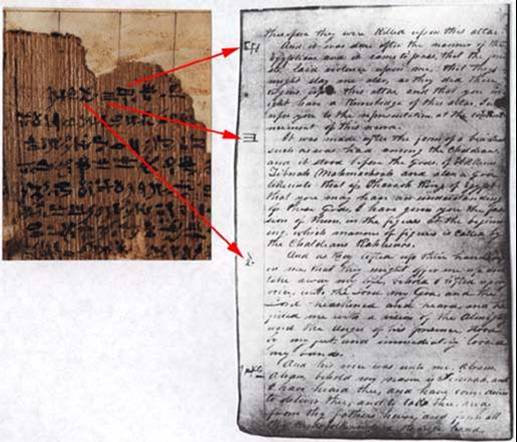
Modern examination of the papyri did not provide the confirmation Mormons were hoping for, but it did confirm something important. Mormons had accepted the Book of Abraham for decades, believing the Church’s assertion Joseph Smith translated it by the power of God as he had claimed. This manner of translation, allegedly guided by God, was the same mechanism by which Joseph claimed to translate the Book of Mormon. The false translation of the Book of Abraham, therefore, casts serious doubt on the Book of Mormon as well, forever debilitating Joseph’s claim he was a true, inspired prophet of God. Thousands of Mormons left the church as the result of this discovery, while thousands more are completely unaware of this important piece of evidence.
How Has the Mormon Church Responded?
The LDS Church has done its best to respond to two difficult problems with the Book of Abraham papyri. The papyri are not old enough to be what Joseph claimed, and they don’t say what Joseph claimed. If the papyri were the record of Abraham while he was in Egypt, they would be the oldest extant manuscript of Biblical material. According to Mormon scholars, the Book of Abraham was written about 4,000 years ago:
“…the Book of Abraham will some day be reckoned as one of the most remarkable documents in existence… the writings of Abraham… must of necessity be older than the original text of Genesis.’ (Mormon apologist Sidney B. Sperry, Ancient Records Testify in Papyrus and Stone, 1938, page 83)
Mormon prophets and teachers have always maintained the papyri purchased by Joseph Smith were the actual papyri (drawn and written directly by Abraham). Early believers were repeatedly assured of this claim. There are several examples of this to be found in the early history of the church and the writings of those who were witnesses at this time in history:
“The storekeeper… drew forth a number of glazed slides, like picture frames, containing sheets of papyrus, with Egyptian inscriptions and hieroglyphics. These had been unrolled from four mummies, which the prophet purchased at a cost of twenty-four hundred dollars. By some inexplicable mode, as the storekeeper informed me, Mr. Smith had discovered that these sheets contained the writings of Abraham, written with his own hand while in Egypt. Pointing to the figure of a man lying on a table, he said, ‘that is the picture of Abraham on the point of being sacrificed. That man standing by him with a drawn knife is an idolatrous priest of the Egyptians.” (Henry Caswall, The City of the Mormons, 1842, pp.22-23)
Soon after purchasing the papyri from Michael H. Chandler, Joseph wrote in his journal: “…with W.W. Phelps and Oliver Cowdery as scribes, I commenced the translation of some of the characters or hieroglyphics, and much to our joy found that one of the rolls contained the writings of Abraham, another the writings of Joseph of Egypt, etc., – a more full account which will appear in its place, as I proceed to examine or unfold them. Truly we can say, the Lord is beginning to reveal the abundance of peace and truth.” (History of the Church, Vol. 2, pg. 236)
Following the purchase and display of the papyri, some young ladies came to view the Egyptian records, “One of the young ladies who had been examining them, was asked if they had the appearance of antiquity. She observed with an air of contempt, that they had not. On hearing this, I [Joseph Smith] was surprised at the ignorance she displayed, and I observed to her, that she was an anomaly in creation, for all the wise and learned that had examined them, without hesitation pronounced them ancient.” (History of the Church, vol. 2, pg. 329)
“’And now come with me,’ said the prophet, ‘and I will show you the curiosities.’ So Saying he led the way to a lower room … There are some pine presses fixed against the wall of the room. These receptacles Smith opened, and disclosed four human bodies, shrunken and black with age. ‘These are mummies,’ said the exhibitor. ‘I want you to look at the little runt of a fellow over there. He was a great man in his day. Why, that was Pharaoh Necho, King of Egypt!’ Some parchments inscribed with hieroglyphics were then offered us. They were preserved under glass and handled with great respect. ‘That is the handwriting of Abraham, the Father of the Faithful.’ said the prophet. ‘This is the autograph of Moses, and these lines were written by his brother Aaron. Here we have the earliest account of the creation, from which Moses composed the first book of Genesis.’ The parchment last referred to showed a rude drawing of a man and a woman, and a serpent walking on a pair of legs.’” (Josiah Quincy, Figures of the Past, 1883, page 386)
The earliest Mormon leaders and witnesses believed and maintained these papyri were, in fact the very scrolls upon which Abraham and Joseph wrote. These papyri were considered to be the original scrolls until they were later recovered in 1966. After discovering the original papyri, scientists, linguists, archeologists and investigators (both Mormon and non-Mormon) examined them and agreed the papyri were far too young to have been written by Abraham. They are approximately 1500 to 2000 years too late, dating from anywhere between 500 B.C. (John A. Wilson, Dialogue: A Journal of Mormon Thought, Summer 1968, p. 70.) and 60 A.D.
How Do They Account for the Young Papyri?
Current Mormon defenses related to the age of the papyri have accommodated this late dating of the documents. Mormons apologists now argue the papyri are later transcriptions and copies of the ancient scrolls written by Abraham. According to these apologists, the originals were written around 2000BC, but the Book of Abraham copies are later copies dating to 500BC to 60AD. This explanation suffers from the following inconsistencies, however:
1. This explanation contradicts 130 years of Mormon teaching in which leaders and witnesses described the papyri as original writings of the patriarch Abraham, written by his own hand.
2. Furthermore, it is unreasonable to expect an upstanding, upper-class member of Egyptian society to be buried with the copied records of an Israelite. History demonstrates the relationship between the Egyptians and the Israelites; it is extremely unlikely an Egyptian would be buried with a copy of Jewish history inserted into his sarcophagus as part of the pagan mummification process.
3. In addition to this, the existing papyri don’t reveal anything dating them in the Egyptian era Joseph Smith claimed. The content of the papyri should at least help verify the dating of the document, even if this content has been copied from an earlier document. But the papyri simply describe an ancient burial ritual and prayers consistent with Egyptian culture in 500BC. Nothing in the papyri hints specifically or exclusively to a time in history in which Abraham would have lived.
Why Don’t the Papyri Say What Joseph Claimed?
Mormon leadership has struggled to answer this important question, and Mormon apologists have adopted two strategies to account for the mistranslation. Some Mormon apologists argue a portion of the papyri is still missing. They claim the Book of Abraham was translated from the missing papyri. Other apologists deny there is any missing papyri and offer a different explanation. This second group claims Joseph didn’t actually use the papyrus to create a “word for word” translation. In order to address the first response, we’ve got to determine if the papyri rediscovered in 1966 were the same ones used by Joseph Smith to translate the Book of Abraham. If we determine these are, in fact, the same papyri, Mormon apologists cannot continue to claim the Book of Abraham came from a missing piece of papyrus. Mormon apologists cite the fact Facsimile No. 3 (presently in the Book of Abraham) is missing from the original papyri set. If Facsimile No. 3 is missing from the original collection, isn’t it possible more papyri (with the text of the Book of Abraham) are also missing? The answer to this question: No.

These four pieces account for the papyri used by Joseph Smith to produce the Book of Abraham
Several pieces of papyrus were returned to the church in 1967. Of these papyri, three are particularly important. They are identified as JSP I, JSP XI and JSP X. The papyri read from right to left. These three pieces of papyri are connected to the Book of Abraham in an interesting way. The first piece (JSP I) contains the ancient drawing from which Facsimile No. 1 has been derived. It fits perfectly with another piece of papyrus, now known as JSP XI. The original manuscripts of the Book of Abraham, as they appear in Joseph Smith’s Egyptian Alphabet and Grammar, reveal Joseph was using characters from this second papyrus (JSP XI) when he “translated” the first chapter of the Book of Abraham. In Abraham 1:12 the patriarch Abraham allegedly said the following:
“And it came to pass that the priests laid violence upon me, that they might slay me also, as they did those virgins upon this altar; and that you may have a knowledge of this altar, I will refer you to the representation at the commencement of this record.”
It’s fairly clear, therefore, the picture shown as Facsimile No. 1 (JSP I) belongs at the start of the papyrus scroll, and Joseph Smith was claiming to translate from the very next portion of the papyrus (JSP XI). The text of the Book of Abraham demonstrates the drawing appearing as Facsimile No. 1 (JSP I) was located at the beginning of the scroll. A larger piece of papyri (JSP X) follows the smaller JSP XI. While the name “Abraham” does not appear on any of the three pieces of papyri, the Egyptian name “Hor” appears on every piece, connecting them contextually. The name can be seen in at least nine places. Although the original piece of papyrus Joseph used to prepare Facsimile No. 3 is missing, Egyptologists have also found the name “Hor” on the printed facsimile Joseph inserted in the Book of Abraham. “Hor” is seen everywhere on the existing papyri and also on Joseph’s reproduction of Facsimile No. 3. It is reasonable to infer the scene shown in Facsimile No. 3 ended the original series of papyri (which have now been translated properly and are known to be a Book of Breathing). This scroll was prepared for the man “Hor” who died and needed the magical papyrus which contained the charms necessary to reach the “world of the hereafter.”
Even the famous Mormon scholar and apologist, Hugh Nibley was willing to concede Facsimile No. 3 was probably part of the original papyri, placed at the left hand end of the scroll:
“For the Book of Breathings is before all else, as Bonnet observes, a composite, made up of ‘compilations and excerpts from older funerary sources and mortuary formulas…Of particular interest to us is the close association of the Book of Breathings with the Facsimiles of the Book of Abraham…. the text of Joseph Smith Pap. No. XI was written on the same strip of material as Facsimile Number 1, the writing beginning immediately to the left of the ‘lion-couch’ scene. The British Museum Book of Breathing[s], ‘the Kerasher Papyrus,’ has both the ‘lion-couch’ scene… and a scene resembling our Facsimile Number 3… This last stands at the head of the ‘Kerasher’ text, and suggests that our Fac. No. 3 was originally attached at the other end of the Joseph Smith Papyrus, coming after the last column, which is missing… the Book of Breathings… contains the essential elements of the Egyptian funerary rites from the earliest times… The Book of Breathings is not to be dismissed, as it has been, as a mere talisman against stinking corpses; it is a sermon on breathing in every Egyptian sense of the word.” (Hugh Nibley, Brigham Young University Studies, Winter 1971, pp. 158, 160, 162, 164, 166)
We have all the papyri Joseph Smith used to translate the Book of Abraham. He used five fragments to translate the book. JSP I was the source for the drawing Smith later called Facsimile No. 1. He used JSP XI and JSP X for the text of the Book of Abraham, and he used the lost papyri (containing the drawing he later called Facsimile No. 3) to illustrate the book. And finally, Smith inserted the drawing he later called Facsimile No. 2 (from another piece of the papyri, unrelated to JSP I, XI and X) into the middle of the text. Even if there are missing pieces of papyri from the original set purchased by Joseph Smith, those missing pieces have nothing to do with the text of the Book of Abraham.
Let’s evaluate the claim related to a missing papyrus another way. According to chapter 1 verse 12, Abraham allegedly included a drawing of the attempt to slay him “at the commencement of this record.” The drawing from the original papyri matches Facsimile No. 1 in the Book of Abraham. If Joseph had another roll of papyrus containing the Book of Abraham, why didn’t he use the drawing Abraham said he placed at the beginning of that roll? Why would Smith switch over to the pagan Book of Breathing and use an illustration (Facsimile No. 1) from this roll? Why would Smith then include Facsimile No. 3 at the end of the record? Remember the name “Hor” can clearly be read in the hieroglyphs on Facsimile No. 3 and this drawing was, according to Hugh Nibley and other scholars, originally located at the end of the Book of Breathing papyrus. Are we to believe Joseph rejected the drawing Abraham himself put at the beginning of his record and added a substitute and two other drawings from the pagan Book of Breathing unrelated to Abraham? This seems highly unreasonable.
Did Joseph Smith Use the Papyri At All?
Many Mormon apologists, after investigating this evidence, have come to the conclusion we actually do have all the papyri Joseph used for the Book of Abraham. They also admit Smith’s rendition does not reflect the accurate translation of the Egyptian hieroglyphics on these papyri. As a result, they now claim Joseph obtained his Book of Abraham by way of direct revelation and not from a translation of the papyrus. They claim God inspired Joseph and revealed the text of the Book of Abraham, using the papyri only as an inspirational tool. The words came to Joseph directly from God, independent of the papyri. According to these apologists, the papyri simply served as the visual foundation from which God miraculously revealed something entirely different.
Joseph’s Egyptian Grammar and Alphabet demonstrates his assertion that he was translating character by character
This explanation contradicts everything Joseph Smith ever wrote (or allowed to be published) about the subject. It is clear from Joseph’s own writing he translated the Book of Abraham from the characters he found on the papyri:
“The remainder of this month, I was continually engaged in translating an alphabet to the Book of Abraham, and arranging a grammar of the Egyptian language as practiced by the Ancients.” (History of the Church, vol 2, page 238)
“October 1.–This afternoon I labored on the Egyptian alphabet… during the research, the principles of astronomy as understood by Father Abraham and the ancients unfolded to our understanding, the particulars of which will appear hereafter.” (Ibid., page 286)
“Tuesday, [Nov.] 24.–…In the afternoon we translated some of the Egyptian records… Thursday, 26.–Spent the day in translating Egyptian characters from the papyrus…” (Ibid, page 320)
At the beginning of the handwritten manuscript of the Book of Abraham, Joseph Smith asserted it was a “Translation of the Book of Abraham written by his (Abraham’s) own hand upon papyrus and found in the catacombs of Egypt.” The introduction to the Book of Abraham still maintains it was “Translated From The Papyrus, By Joseph Smith” (Pearl of Great Price, The Book of Abraham, Introduction). Current claims the Book of Abraham was not translated from the papyri deny over 150 years of Mormon teaching on the subject (and the very words of Joseph himself). His Alphabet and Grammar clearly describes Smith translating the papyri character for character.
Discerning from the Evidence
When I first became interested in the person of Jesus, I examined both Christianity and Mormonism with the same rigorous four part test for reliability. Because I had several Mormons in my family (and no initial bias favoring Christianity over Mormonism), I gave the LDS Scripture a long and open-minded look. My template revealed a number of problems with the Book of Mormon and the person of Joseph Smith, but the evidence related to the Book of Abraham papyri left only one reasonable inference. Despite the efforts of Mormons to restore the reliability of the Book of Abraham, it appears to be a demonstrably false book, errantly translated and misrepresented as scripture by the LDS Church. It undermines the claims of Joseph Smith related to other allegedly divinely inspired translations, including the Book of Mormon. By taking an evidential approach to Christian and Mormon scripture, I was able to confirm the veracity of Christianity while guarding myself from the falsity of Mormonism.
Despite the efforts of Mormons to restore the reliability of the Book of Abraham, it appears to be a demonstrably false book, errantly translated and misrepresented as scripture by the LDS Church. Share on X
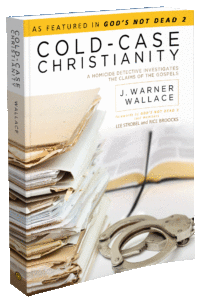
J. Warner Wallace is a Dateline featured cold-case homicide detective, popular national speaker and best-selling author. He continues to consult on cold-case investigations while serving as a Senior Fellow at the Colson Center for Christian Worldview. He is also an Adj. Professor of Christian Apologetics at Talbot School of Theology, Biola University, and a faculty member at Summit Ministries. He holds a BA in Design (from CSULB), an MA in Architecture (from UCLA), and an MA in Theological Studies (from Gateway Seminary).














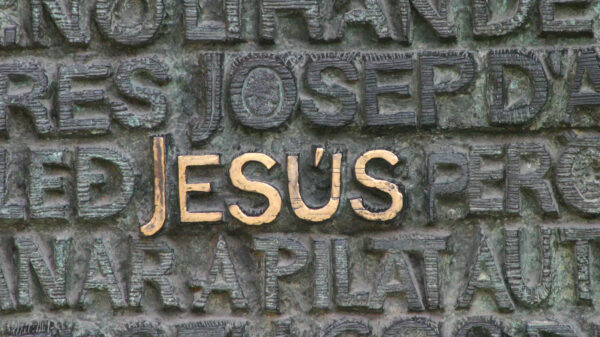




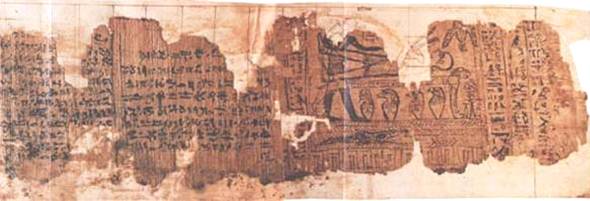
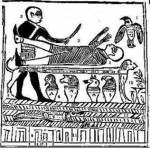

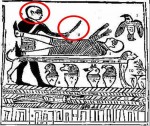
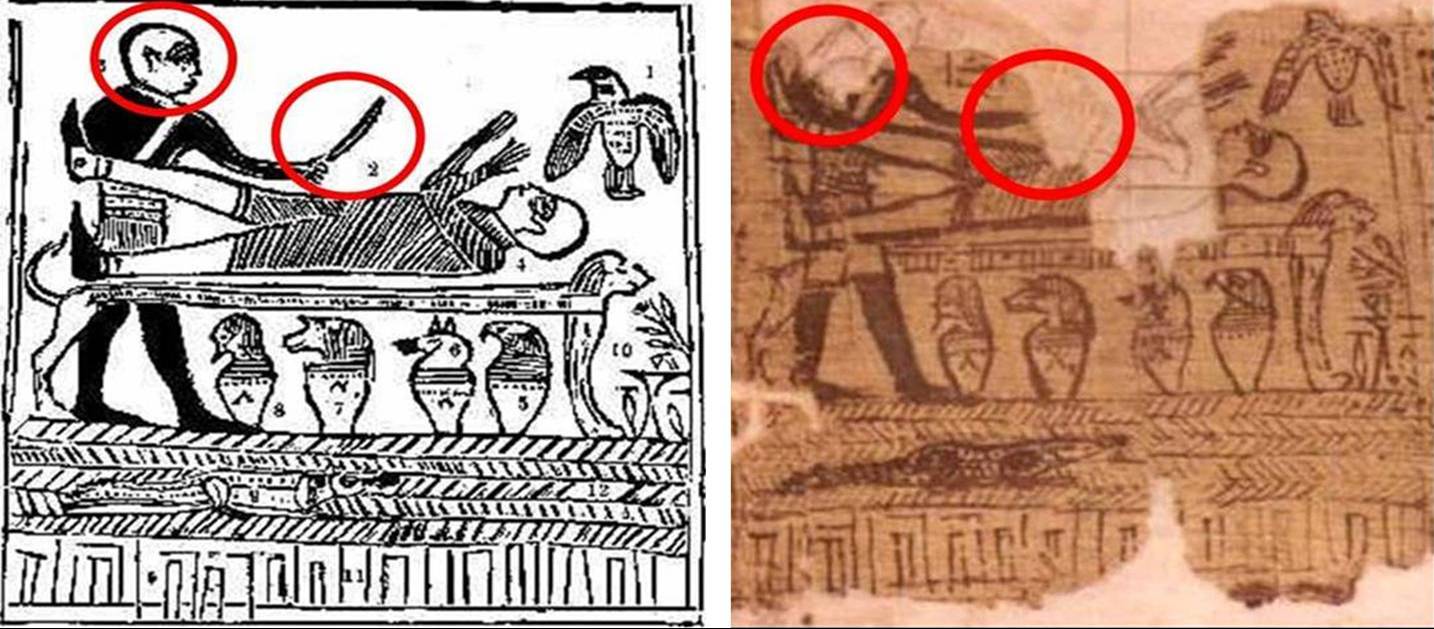
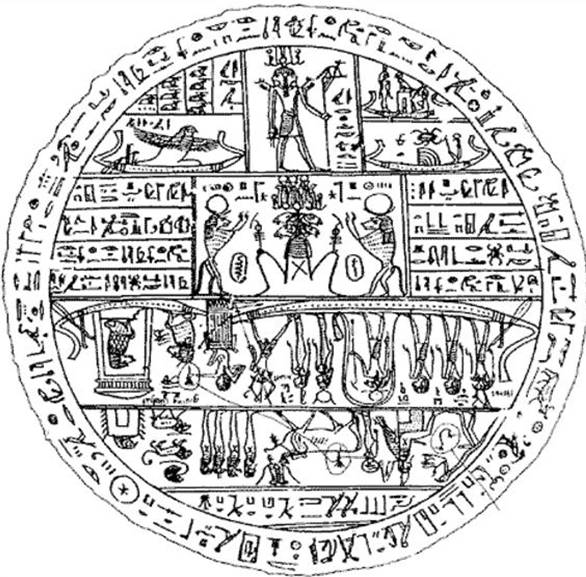
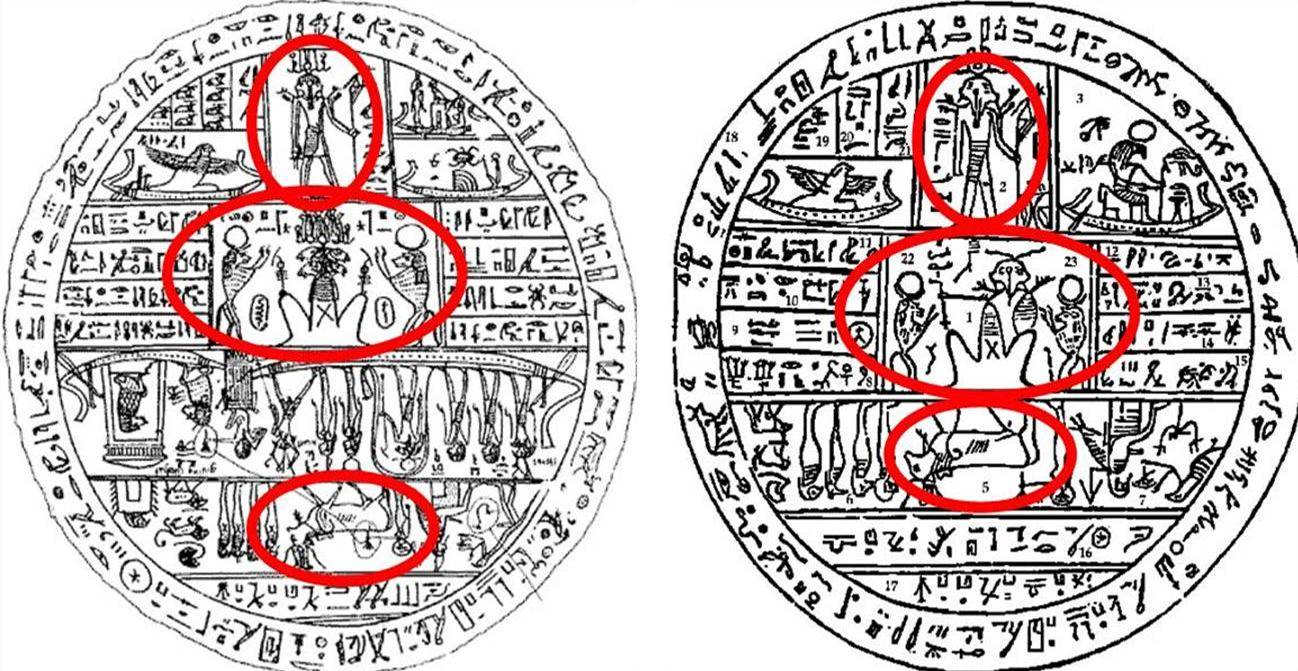
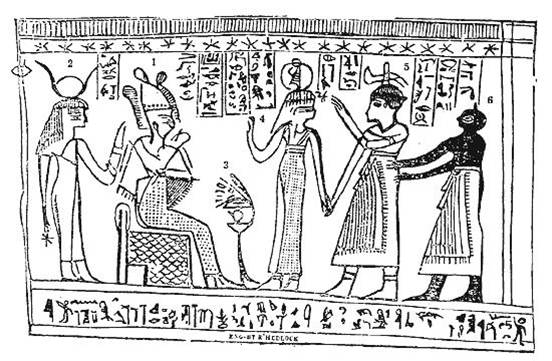
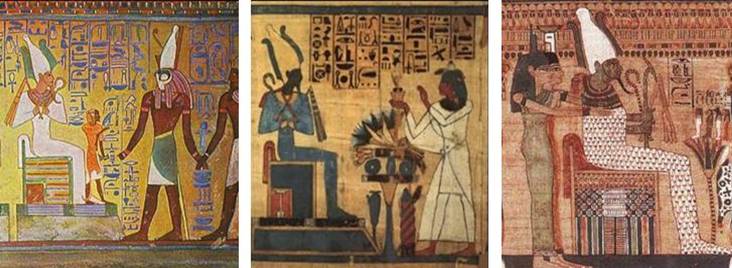
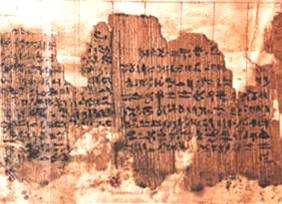
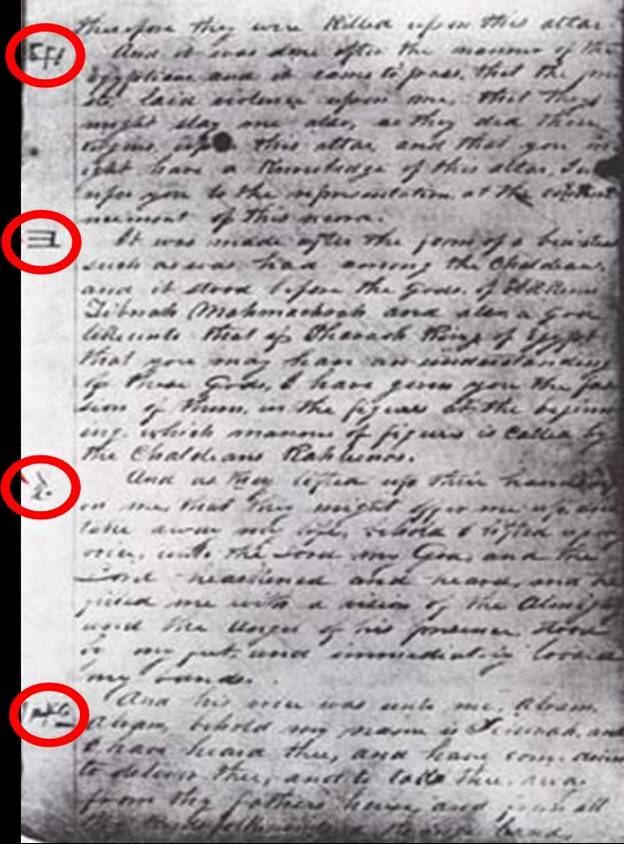
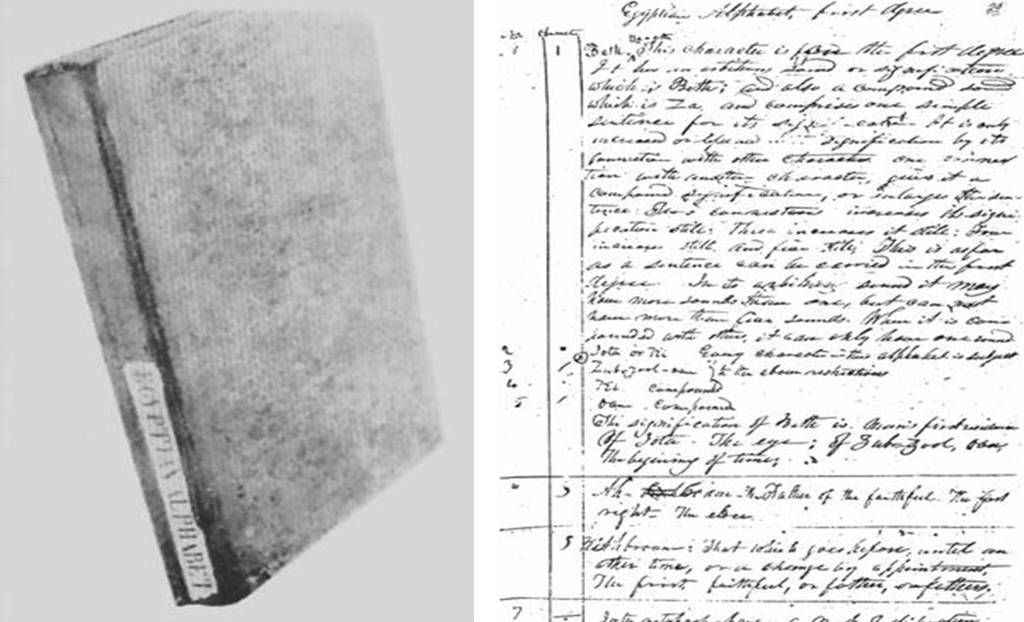








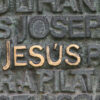




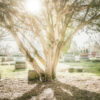

Pingback: POST: Data Points Every Orthodox Mormon Should Know - Mormon Discussion PodcastMormon Discussion Podcast
Pingback: mid-week apologetics booster (9-14-2017) – 1 Peter 4:12-16
Pingback: The Bible and the Book of Mormon: Is the Difference Simply a Matter of Time? -
Pingback: Como o Livro de Abraão Expõe a Natureza Falsa do Mormonismo – Cosmovisão e Fé
Pingback: The Book of Abraham – A closer look
Pingback: Investigating the Evidence for Mormonism In Six Steps – Uncaged Lion
John Engelman
September 3, 2021 at 6:02 pm
Two Mormon missionaries proselytized me in 1968 when I was nineteen years old. I really did want to become a Mormon, but I wanted to prove that Mormonism was true. I thought that Mormonism was unique among religions because it lent itself to a rational evaluation.Either The Book of Mormon is an accurate history of pre Columbian history from about 600 BC. to about 421 AD, or it is not. If it is, the events in the Book of Mormon can be independently verified. If they cannot be independently verified, Mormonism is false.
When I learned that the manuscript from which The Book of Abraham had been translated had been discovered, I thought that it could prove or disprove Mormonism. The two Mormon Missionaries gave me several articles by Hugh Nimbly to read. Nimbly knew how to read the ancient Egyptian language. I expected Nimbly to feel triumphant.Here after all was proof of Mormonism. Instead he was apprehensive, and wrote worryingly of “the problem of the Book of Abraham.”
At that point I decided that the manuscript from which Joseph Smith claimed to translate the Book of Abraham resembled the Egyptian Book of the Dead. I went to a nearby library and checked out a book that had the Book of the Dead on one page, and an English translation on the opposing page. It became clear to me that Joseph Smith’s manuscript was part of the Book of the Dead, and that Joseph Smith was a religious charlatan.
The Mormon missionaries were shocked by my findings, but they could not answer my arguments. Many years later I learned that Egyptian scholars had come to the same conclusions I did.
Anne
February 9, 2022 at 2:52 pm
I am a member of the church of jesus christ of latter day saints(we hate it when you call us mormons, or our religion mormonism), and i have problems with the story too. I dont know what to think of the authentisity, but as far as the name goes, what if one person telling the story switched the name up, or the story, and another also told it differently. I’m sure your mom told you the story of little red riding hood differently than mine did.
Stephanas
February 14, 2022 at 11:36 am
Your comment is ignorant for 2 reasons:
1) You clearly are unaware that many Latter Day Saints prefer the terms you say you hate. Here’s some black & white proof of that:
https://www.sltrib.com/news/2018/08/16/lds-church-wants-everyone/
2) Using Little Red Riding Hood told by different moms as a comparison to “the Book of Abraham” actually being “the Book of Breathings” shows you didn’t read the above article at all. My mom did not tell me the story of Super Man coming to earth from the planet Krypton, and accidentally call it “Little Red Riding Hood” and get the details of the story mixed up with a recipe for chili & corn bread. You might want to re-examine your statement; perhaps you were on medication or sleep deprived when you wrote it, initially. (I’m trying to give you the benefit of the doubt.)
You may also benefit from a look at wikipedia:
https://en.wikipedia.org/wiki/Criticism_of_the_Book_of_Abraham
Ultimately, you REALLY SHOULDN’T wave off the concept of questionable “authentisity”. If Joseph Smith made the whole thing up, then your religion is made up, and the Book of Mormon is made up, and your hope for eternal life is made up. That’s kind of a big deal. For the sake of your eternal soul, put your thinking cap on and open your eyes. No one is attacking you. We are trying to warn you! (We have nothing to gain by it.)
Paul Perkins
January 6, 2023 at 5:05 pm
The Bible is clear about some things and speaks about it extensively and that is the “truth”. I hope you read the following scriptures and know that “No lie is of the truth”, not even one, zero. 1 John 2:21 KJB and see: 2 Thessalonians 2: 11-12 KJB. And Jesus said: “Jesus saith unto him, I am the way, the truth, and the life: no man cometh unto the Father, but by me.” John 14:6 KJB and lastly:”Sanctify them through thy truth: thy word is truth.” John 17:17 KJB. There is a difference between the “truth”and “falsehood/lie(s).
Anne
February 9, 2022 at 2:56 pm
Just because one thing might not be right, doesnt mean that the whole thing is wrong. And PLEASE STOP CALLING US MORMONS, OR OUR RELIGON MORMONISM. We are the church of jesus christ of latter day saints.
Stephanas
February 14, 2022 at 11:58 am
Why is this true?
If one thing is wrong–WHY ISN’T the whole thing corrupted? Please expound on that.
In MY mind, that’s like saying if 1 turd is dropped into the mixing bowl with the chocolate chip cookie dough, that doesn’t make the whole batch of cookies inedible.
I am genuinely baffled at this argument. PLEASE help me to understand how it makes sense! I never hear ANYONE talk this way about ANY subject–except for Mormons & Jehovah’s Witnesses regarding the defense of their indefensible faiths.
If Joseph Smith lied about an entire book, how do you know he didn’t lie about the whole thing? (Well, strictly speaking, the Book of Mormon is more of a plagiarism than a lie.) It is a verifiable fact that Joseph Smith produced 75% of the BoM by plagiarizing and cut/pasting from 6 sources in print (or that were preached) in his day, and in his area of the country.
As for the Book of Abraham, chapter 1 is from the 1830 edition of Josephus, chapters 2, 4, and 5 are comprised of 88% of verses from the King James Bible. Chapter 3 is from Thomas Dick’s “Philosophy of a Future State”, and the texts of the facsimiles are from Thomas Taylor’s “Theology of Plato” from 1816. If the BoA is a lie, why would you want to persist in believing it? And how could you sensibly hope to have any chance of eternal life when knowingly basing your faith on a lie? Why not try the truth instead? I mean, really: why not? Why are you so married to the lie? I would love a sane answer to this; it is completely incomprehensible to me.
And, BTW, most of the faithful practicing LDS folks I know refer to themselves as Mormons. Maybe this article will be enlightening for you…
https://www.sltrib.com/news/2018/08/16/lds-church-wants-everyone/
Dawn
January 15, 2024 at 12:08 pm
Hello Anne. Why does your church hate being called Mormons? Do you not remember the commercial the Mormon church put out “I am a Mormon” it was a commercial from your church. Now, they want to change that? You need to ask yourself “why” The reason your religion is called Mormons is due to “The Book of Mormon” NOW, all of a sudden your church finds it to be offensive? We are living in times where everyone is a victim now. People don’t want to be called female or male, we are living in crazy times! Go look up your churches old commercial “I am Mormon”
Remember, “The truth may hurt for a little while, but a lie hurts forever.”
GTC
October 12, 2021 at 10:56 pm
Great article. And as if any discerning Christian needed any further evidence of Smith’s false and completely fabricated “translation”, there is something that I found and that always comes to mind when discussing this topic. It is a blatant contradiction to the clear text of Genesis: In the latter, God clearly renames Abram to Abraham when he is 99 YEARS OLD. But in reading Smith’s purported “translation” God speaks directly to “Abraham” and he refers to himself as “Abraham” BEFORE he even left for Egypt and 33 YEARS TOO EARLY! WHOOPS!
Mark Schmitt
December 5, 2021 at 6:31 pm
https://www.churchofjesuschrist.org/study/manual/gospel-topics-essays/translation-and-historicity-of-the-book-of-abraham?lang=eng
This essay from the church explores all of the details surrounding the book of Abraham from the perspective of the Church of Jesus Christ of Latter-day Saints, for thos interested in the full perspective.
I am a member of the Church and I have been blessed by reading the Book of Abraham. There is spiritual fruit to be had there in studying it and prayerfully pondering what it contains. As the essay I link above makes clear, there are a number open questions about the Book of Abraham from a strictly archeological perspective, but I have no concerns about its value as a spiritual text that has enriched my relationship with God and understanding of Him.
Kerry
January 22, 2022 at 2:04 pm
Mark, I respect people religious views in an increasingly secular world. But I find particular afront in Joseph Smith’s claims that the new covenant of Jesus failed and that we should return to the law of the Old Testament. The fact that many people clearly accept pagan and invented forms of worship doesn’t exonerate Smith of the same. Truth is Truth regardless of who lives by it.
This man, with his many wives and bogus ‘translations’ should be seen for what he is – a false prophet.
Stephanas
February 14, 2022 at 12:51 pm
Mark, thanks for attempting to present a 360 degree view of this topic. Nevertheless, I am baffled by your arguments.
You say you have been blessed by reading a proven forgery.
You say there may be spiritual fruit to be had in blatant lies.
You say the textual concerns are strictly archaeological.
You say the text has enriched your relationship with God.
You say the text has enriched your understanding of God.
How do these claims stack up with reality? How does this line up with what is already known of God? II Corinthians 6:14-18 says that there is NO CONNECTION between Christ & lies. And we know that no branch can bear fruit unless it is abiding in the vine. (See John 15:4-6.) Logically speaking, if fruit comes by connection to Christ and Christ is not connected in any way to lies, then whatever benefit you think you are receiving from lies is some form of self-delusion or satanic fabrication. Perhaps you would like to contradict what these 2 passages teach? Maybe you don’t believe these things? Maybe you believe that Jesus was a liar sometimes too…I can’t think of any other way to make sense of your claims. (Maybe you just have never read those passages in the Bible?)
If you hold to a view of God which is a lie, then whatever relationship you have, which you think has been “enriched”, has been nothing short of spiritual catfishing! You have entered into a relationship with a god of your own making (or someone else’s)–something that seems good & acceptable to your own imagination. Scripture calls that an “idol”–the word for it in Hebrew is “a nothing”. You have a relationship with NOTHING. “God is light and in him is no darkness at all.” (I John 1:5-6.) It is impossible to glean spiritual benefits from something that is false. This is the whole point of Ezekiel chapter 13. I encourage you to read it! God also describes the works of false prophets in Ezekiel 22:25,28. If you revere a false prophet as your leader, you cannot have grown in your understanding of God under this man’s direction. Jeremiah 28:15,16 makes it clear that those who trust in lies are in rebellion against the LORD. The same way Adam & Eve were, in the garden when they believed the lies of THAT serpent.
The BoA paints a picture of Abraham that makes him worthy of God’s favor due to his merit. God clearly states this is not the case, in Deuteronomy chapter 7, where God lays out why he chose the descendants of Abraham to be his “special people”. It wasn’t because of their merits A quick read over Romans chapters 3 & 10 will show you that’s what those people thought too–they would have agreed with you! But they were wrong, just like you are. What they believed is in direct conflict with what the scriptures teach. And the Apostle Paul was greatly desirous to see them be redeemed & see them in heaven! But without submission to truth, there is no redemption. Abraham was counted righteous because he believed God, NOT because he believed a lie! If you want to follow in Abraham’s footsteps & receive the blessings promised to him, wouldn’t it make sense to submit to the same truths he did?
And finally, the textual concerns are NOT merely archaeological. They are also textual. Regarding the Book of Abraham, chapter 1 is taken from the 1830 edition of Josephus, chapters 2, 4, and 5 are 88% comprised of verses from the King James Bible. Chapter 3 is from Thomas Dick’s “Philosophy of a Future State”, and the texts of the facsimiles are from Thomas Taylor’s “Theology of Plato” published in 1816. It’s plagiarism, friend. And the concerns are not just textual either; the BoA contradicts the Bible in SO MANY points I just can’t even go into them all in this thread. You should have NO CONFIDENCE & NO BELIEF in it “as a spiritual text” aside from the part it plays in turning souls aside from the truth–in this respect (as a counterfeit tool of Satan) it is indeed an effective spiritual text!
“Seek the Lord while he may be found!” (Isaiah 55:6,7)
Robert Dean Luke
December 9, 2021 at 11:36 pm
😊 After reading this article my hope is that all who are sincerely interested in understanding the whole truth, may read further. I highly recommend reading or listening to the essay by the Church of Jesus Christ mentioned above with the link provided. May the Holy Spirit guide You! 🕊
In the name of Jesus Christ, Amen 🙏🏻
George Wilkes
February 9, 2022 at 4:09 am
If you’re interested in knowing the truth, read the Bible. Read about the real Jesus Christ in the New Testament and hear how He has done *EVERYTHING* that you need for salvation – you just need to trust in Him.
Here are some verses to start you off:
Ephesians 2:8-10: For it is by grace you have been saved, through faith — and this is not from yourselves, it is the gift of God — not by works, so that no one can boast. For we are God’s handiwork, created in Christ Jesus to do good works, which God prepared in advance for us to do.
Hebrews 7:25: Therefore He (Jesus) is able to save completely (forever) those who come to God through Him… [Jesus’ death in our place covers ALL sins, not just some of them, and covers ALL of our sin for all time.]
John 1:1: In the beginning was the Word, and the Word was with God, and the Word was God. [Note there is no ‘a’ before God – this upholds the Trinitarian view of God, not God as separate entities like the LDS church teaches. See also Deuteronomy 4:35: “You were shown these things so that you might know that the LORD is GOD: besides Him, there is no other.]
Acts 17:24: “The God who made the world and everything in it is the Lord of heaven and earth and does not live in temples built by human hands…
And if you’re into Priesthoods, have a good read of the whole book of Hebrews and see how Jesus has become our Great High Priest and lives to intercede for us.
By trusting in Jesus, you are made perfect in the eyes of God the Father – no more working for your salvation and never knowing if you’ve done enough to merit your way into Heaven – Jesus has done it all for you in dying on the Cross. You can then live in the freedom He gives you to serve Him.
I pray that you will come to know the real Jesus of the Bible and place your trust in Him.
Wreath
April 9, 2023 at 8:31 pm
Incredulous! Thanks for this. I don’t know how I did not know this, and why this isn’t common knowledge.
I was just reading The Book of Moses, Chapter 5, and it takes Genesis and adds Luciferian doctrine. Can anyone find the suspected source for that?
This matters outside of Utah. Senator Warren Hatch passed the most legislation of any federal politician every — and apparently, he was in an Egyptian Mystery Religion pretending to be conservative.
“Fallen! Fallen is Babylon the Great! She has become a home for demons and a haunt for every evil spirit, a haunt for every unclean and detestable bird.”